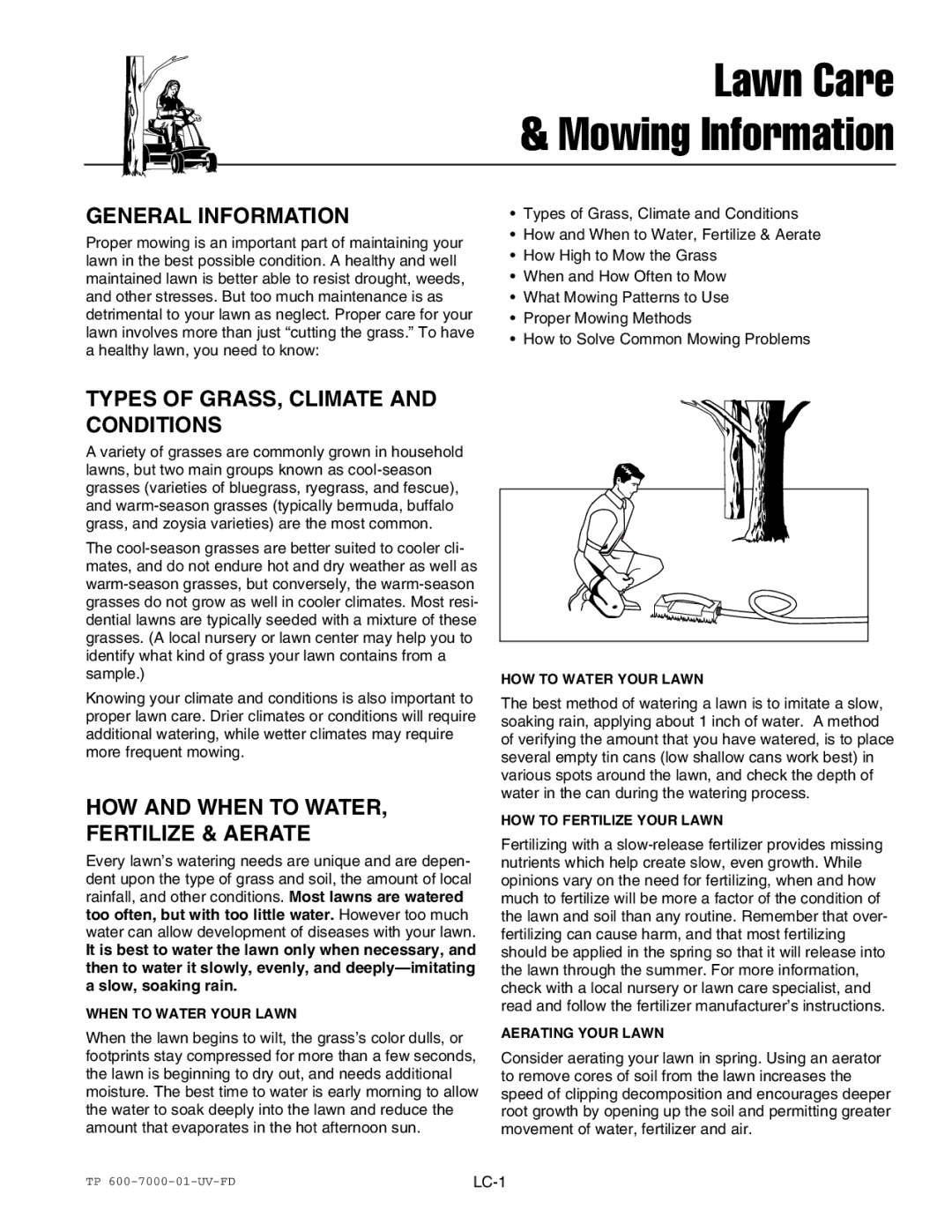SFH13320KW specifications
The Snapper SFH13320KW is a versatile and powerful lawn mower designed to meet the needs of homeowners seeking efficiency and reliability. This robust mower is powered by a durable 13.5 HP Briggs and Stratton engine, ensuring that it can handle a variety of mowing tasks with ease. One of the standout features of the SFH13320KW is its 33-inch cut width, which allows for efficient mowing in both large yards and tighter spaces, making it ideal for residential properties of all sizes.Equipped with a 7-speed transmission, the Snapper SFH13320KW offers exceptional maneuverability and control. Users can effortlessly adjust their speed to match the terrain and type of grass being mowed, ensuring optimal cutting performance. The model’s adjustable cutting height ranges from 1 to 4 inches, allowing for personalized lawn care that caters to different grass types and seasonal variations.
One of the remarkable technologies employed in the Snapper SFH13320KW is its lever-controlled drive system. This system provides homeowners with easy operation and allows for quick starts and stops, enhancing user experience and safety. The mower’s compact design features a tight turning radius, making it easy to navigate around trees and garden beds, resulting in a well-manicured lawn without the hassle of missed patches.
The Snapper SFH13320KW also incorporates a robust steel deck, known for its durability and resilience against rust and corrosion. This ensures that the mower remains in excellent condition even after multiple mowing seasons. Furthermore, the electric start option eliminates the need for manual pulling, simplifying the starting process and making it accessible for users of all ages.
Additional characteristics include large rear wheels that provide superior traction and stability, making it easier to tackle uneven terrain. The mower also features a comfortable seat with an ergonomic design, reducing fatigue during extended mowing sessions.
In conclusion, the Snapper SFH13320KW combines power, efficiency, and user-friendly features, making it an excellent choice for homeowners. With its reliable engine, adjustable controls, and sturdy construction, this mower stands out as a reliable tool for maintaining a beautiful and healthy lawn. Whether you're dealing with a small yard or a larger landscape, the Snapper SFH13320KW is equipped to handle your mowing needs effectively.

